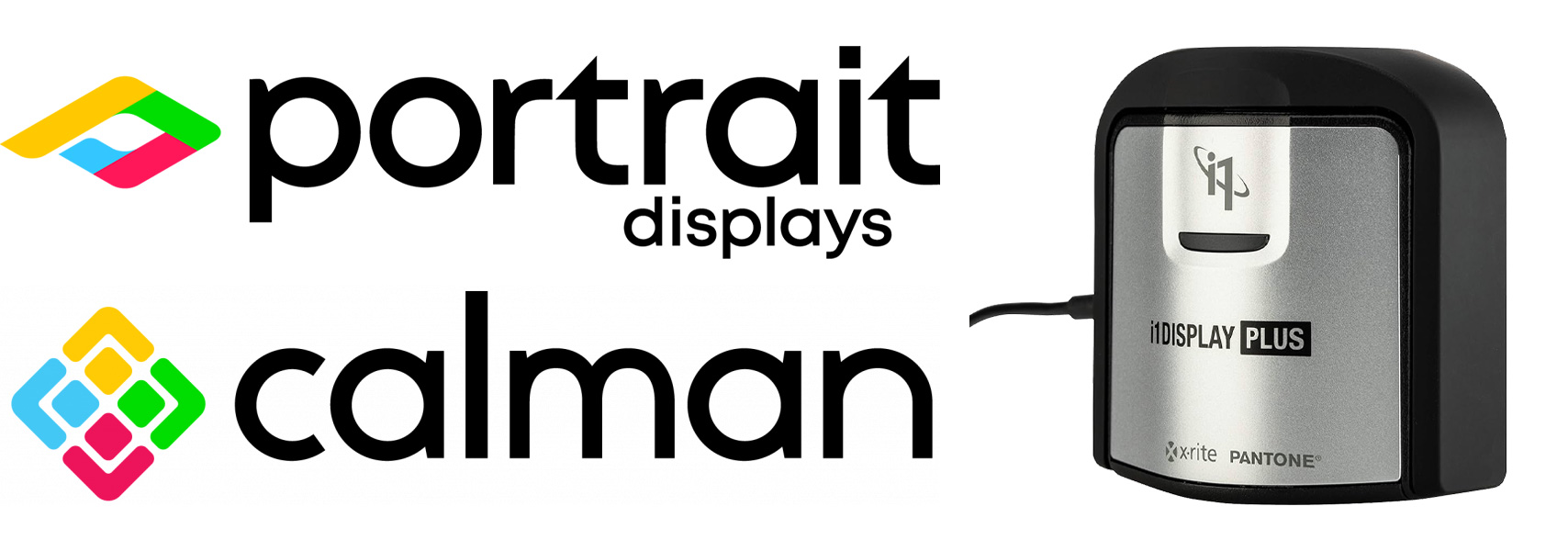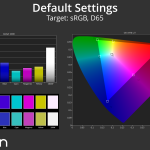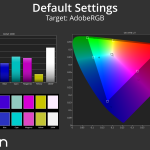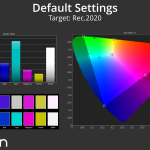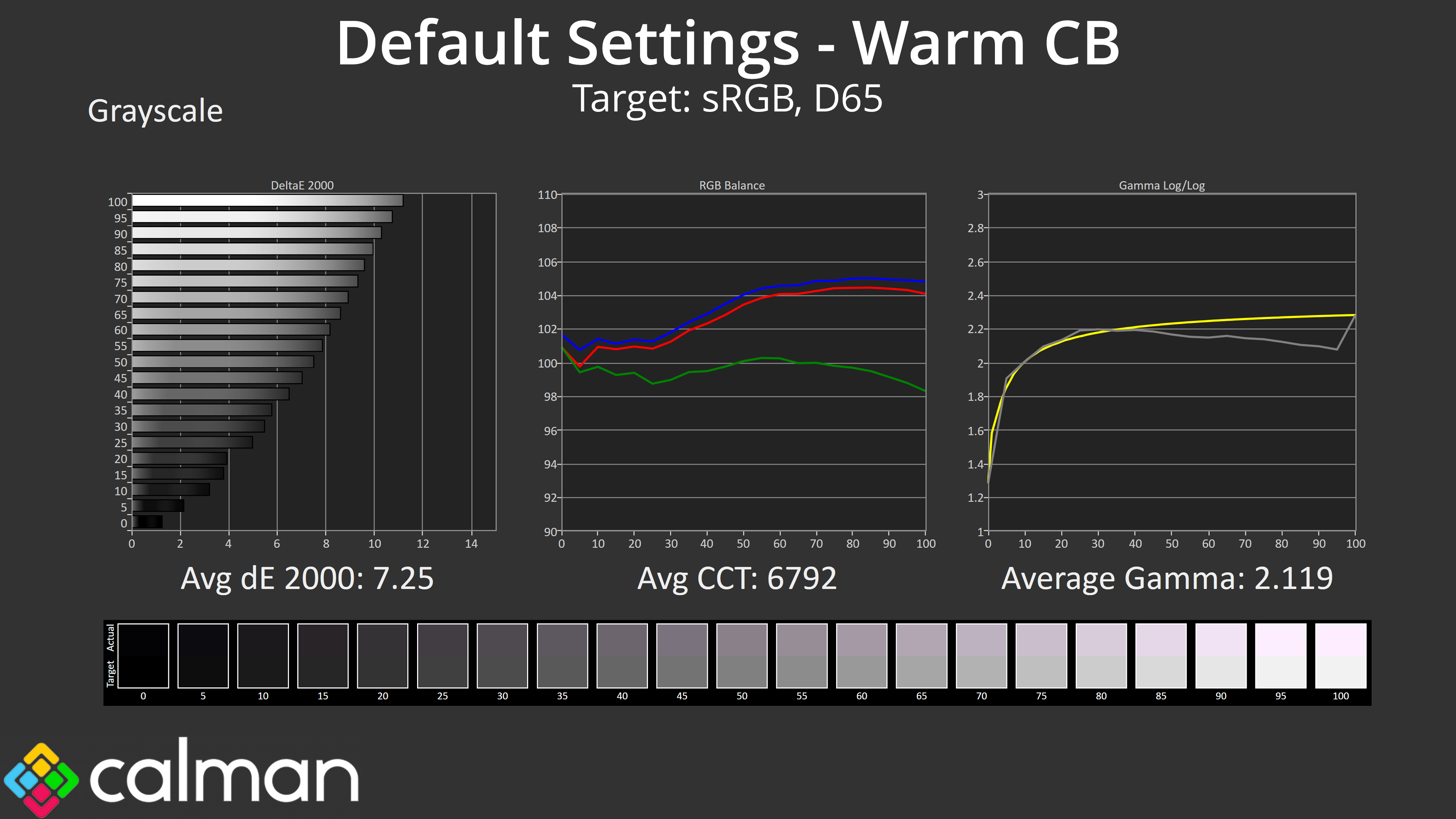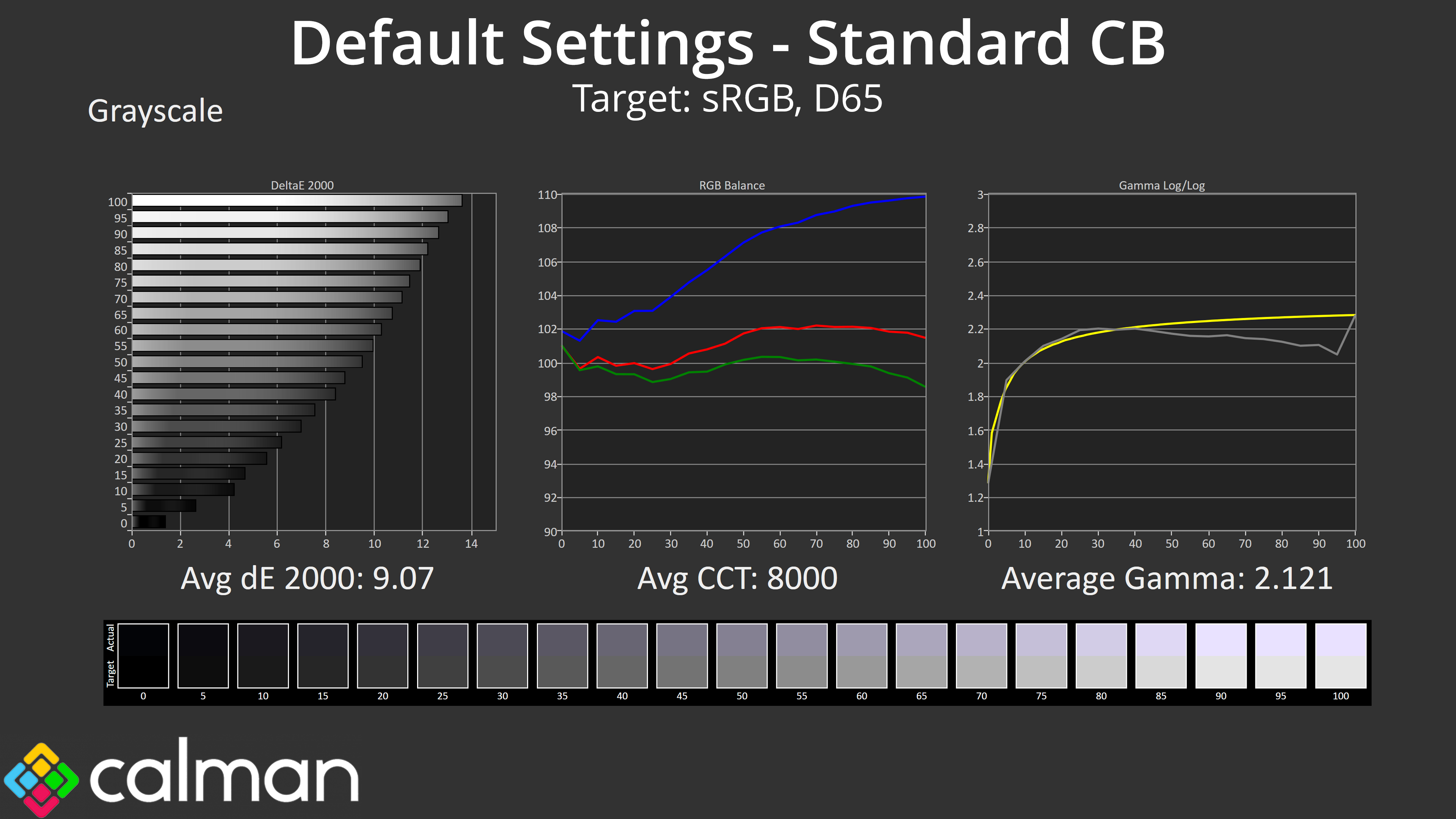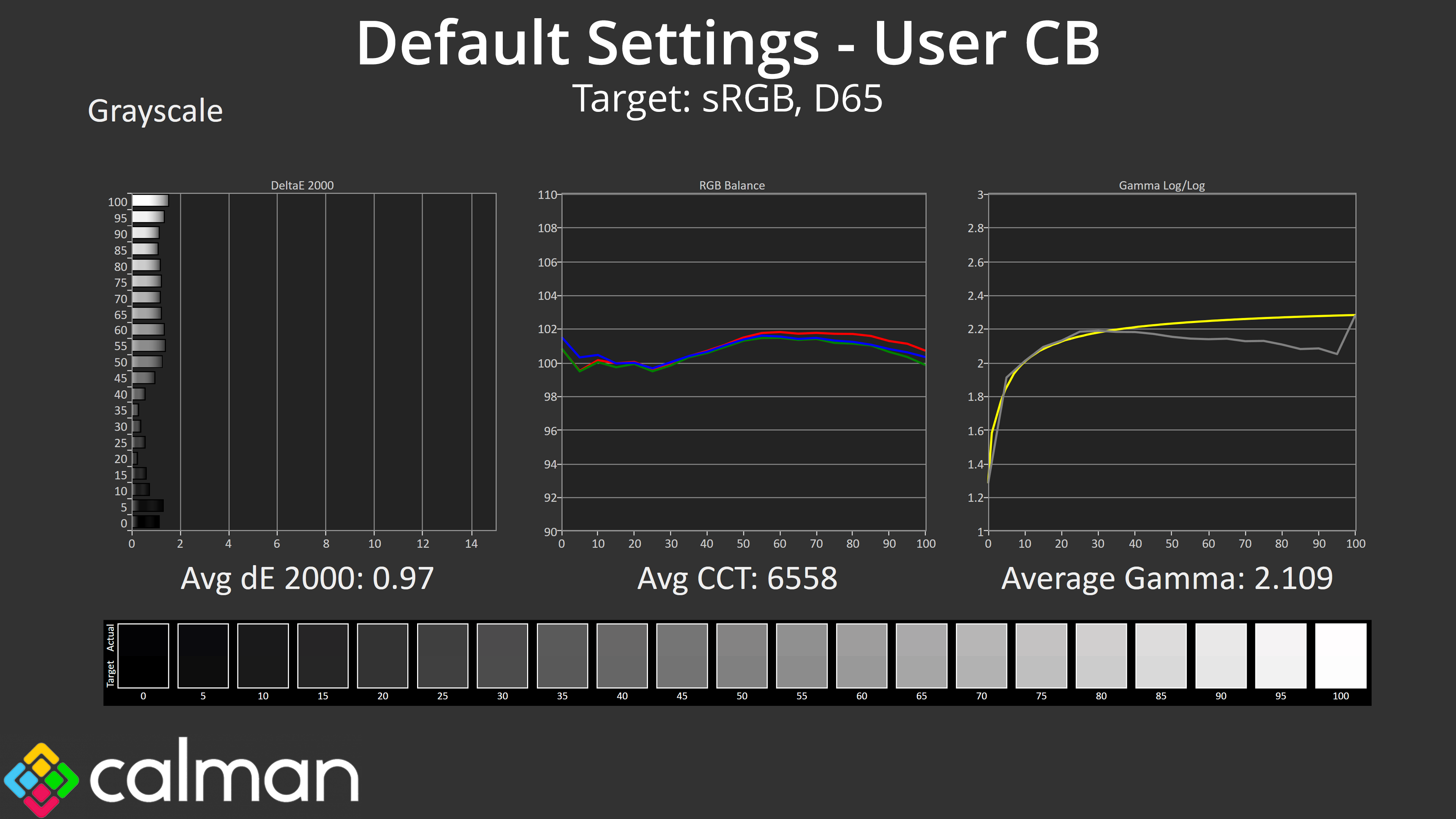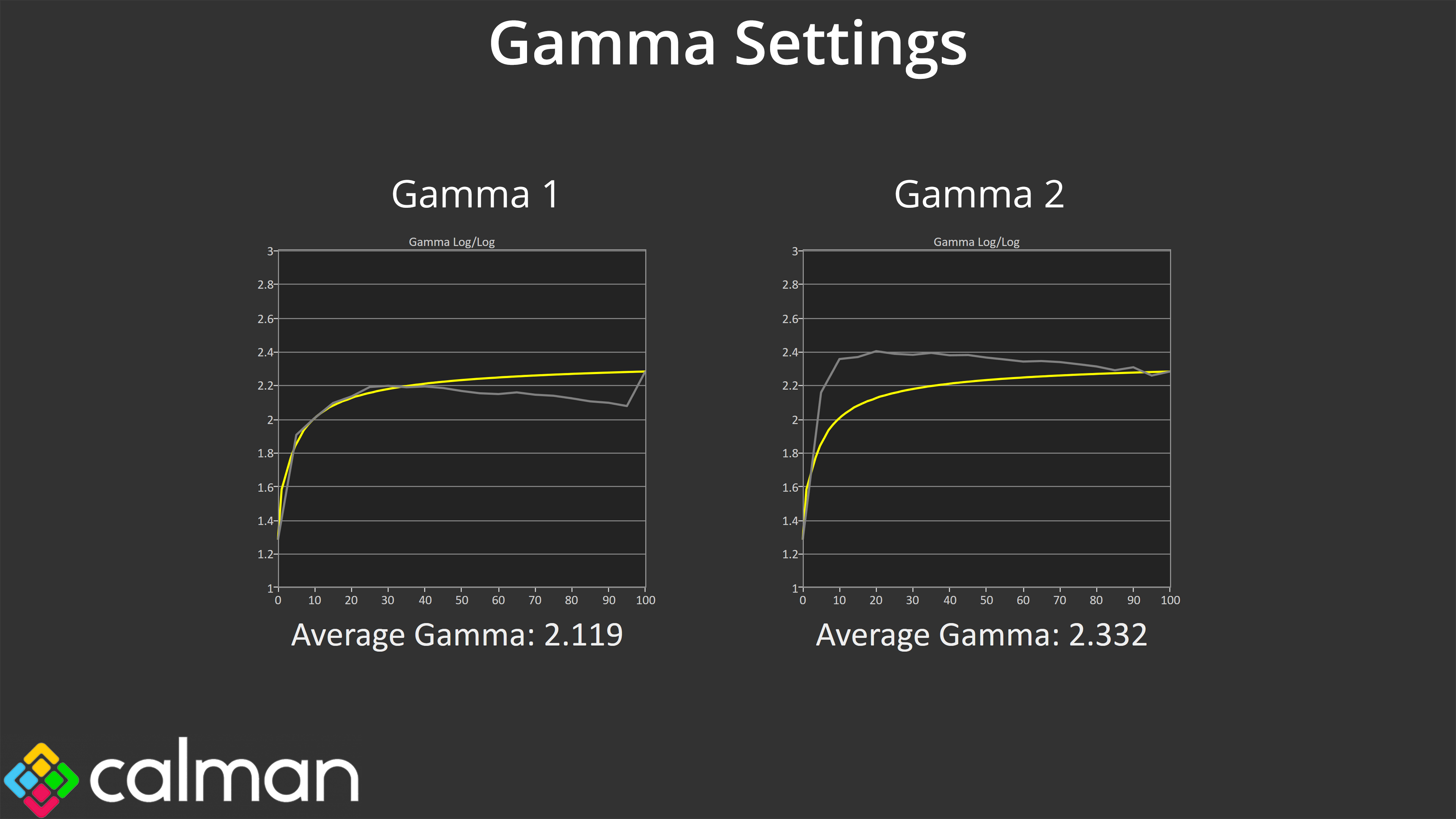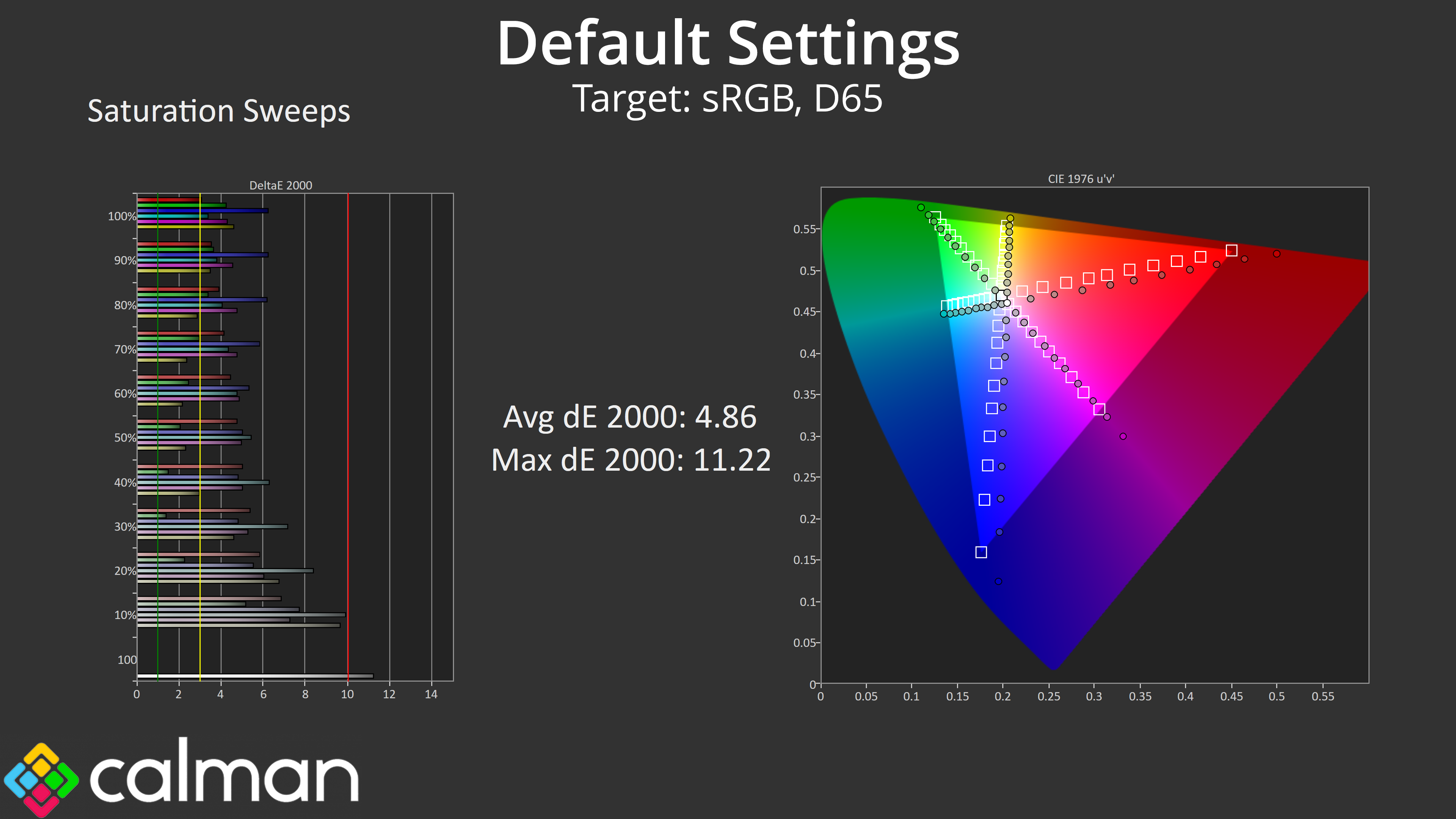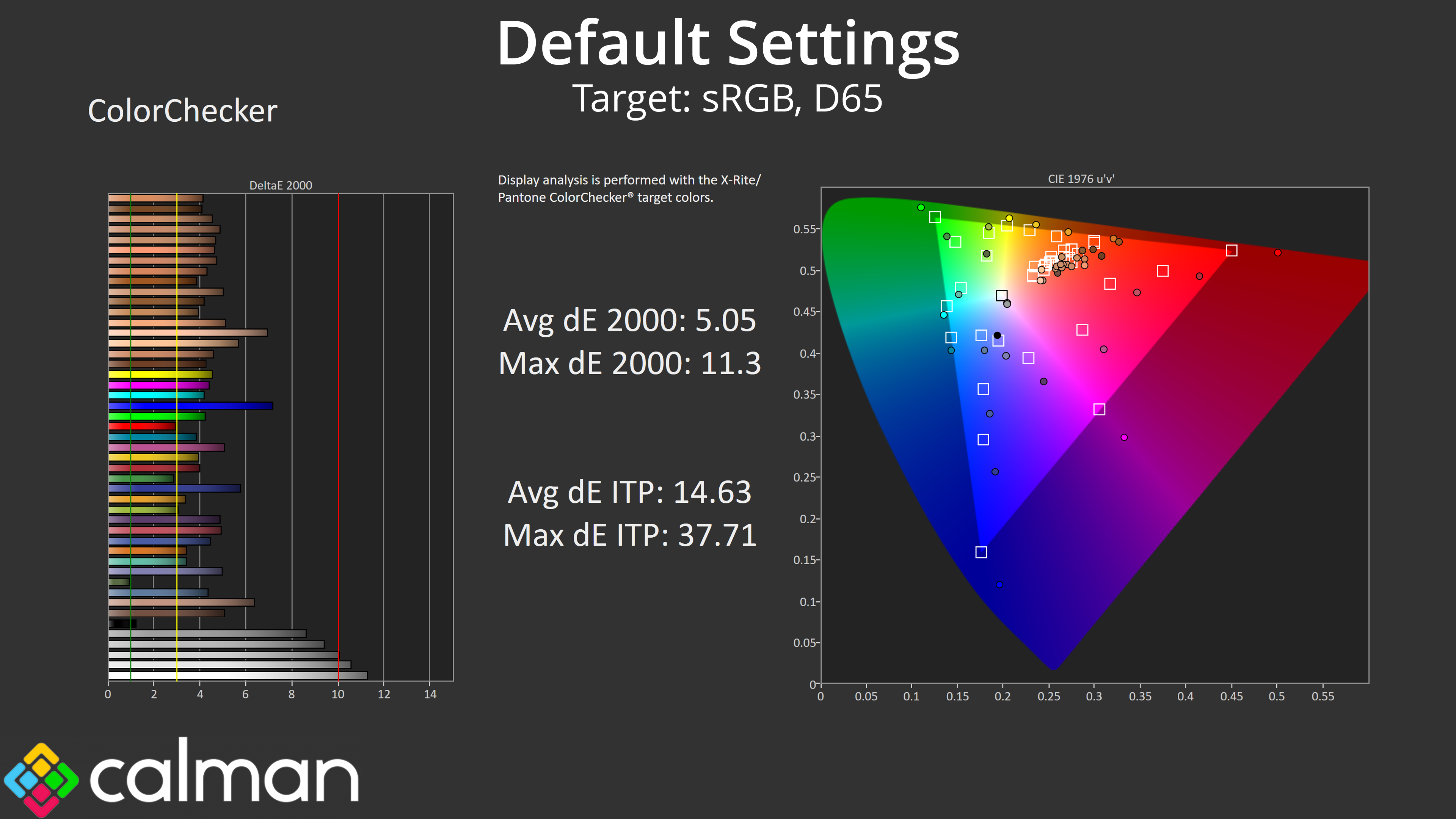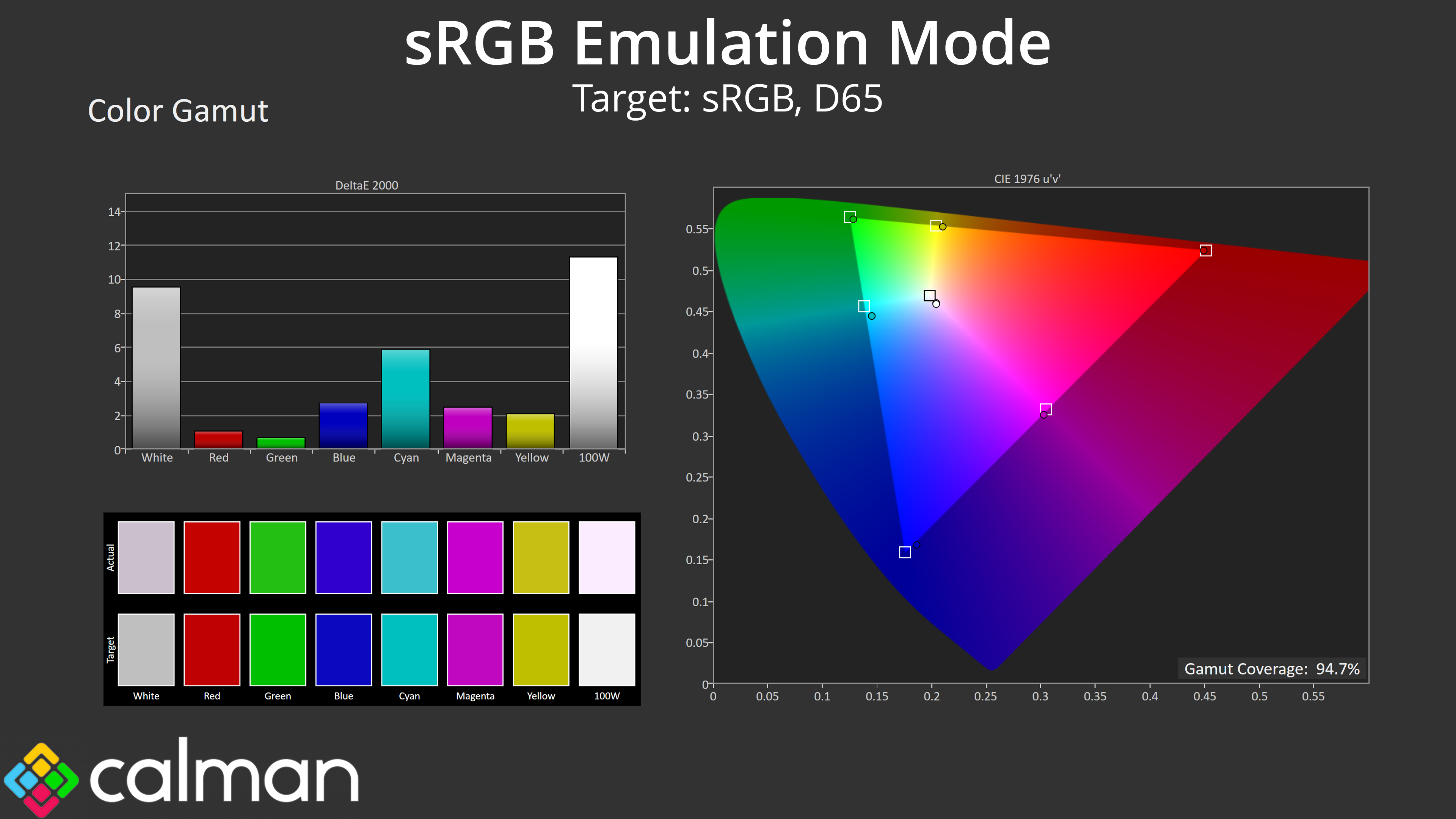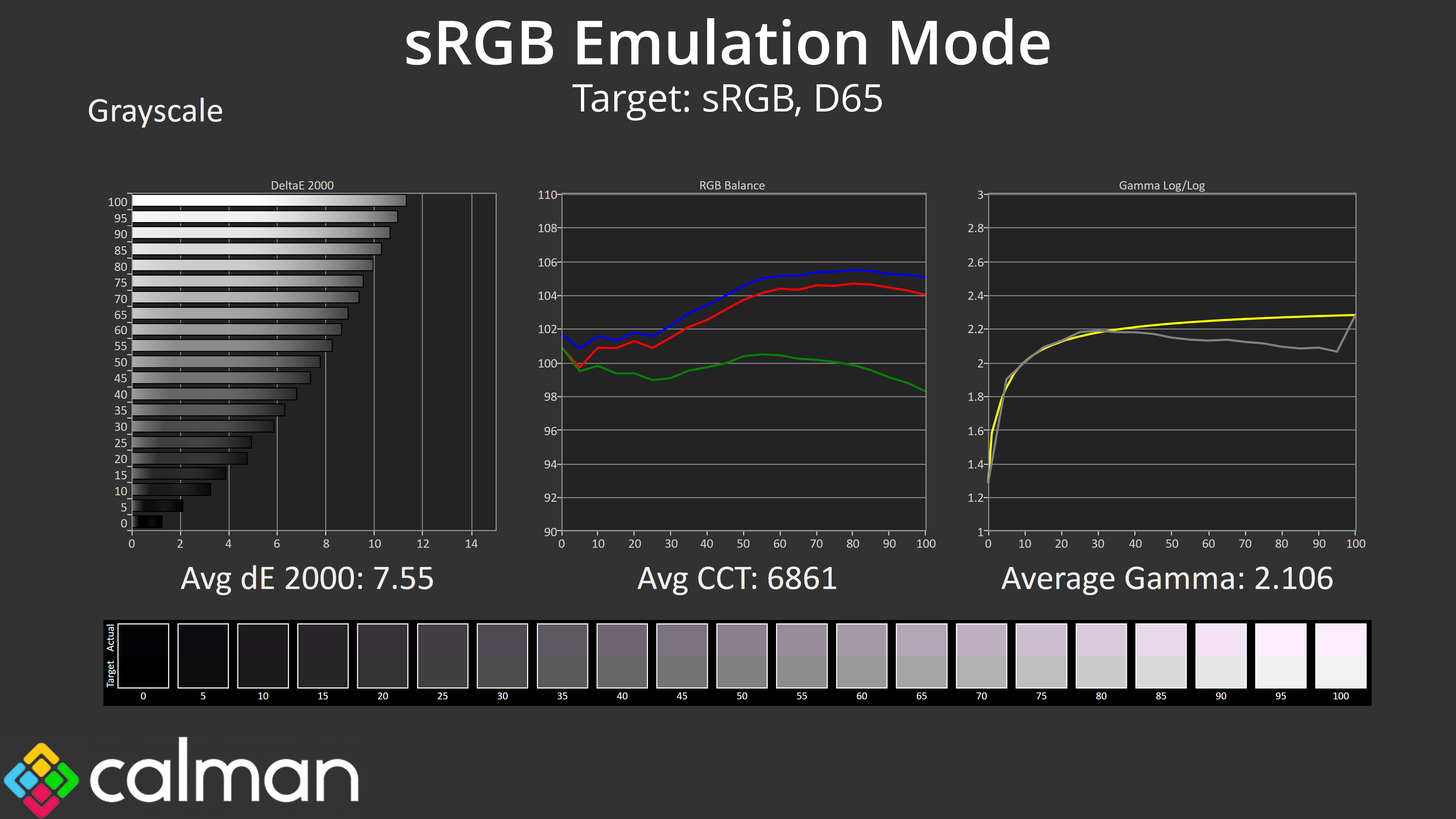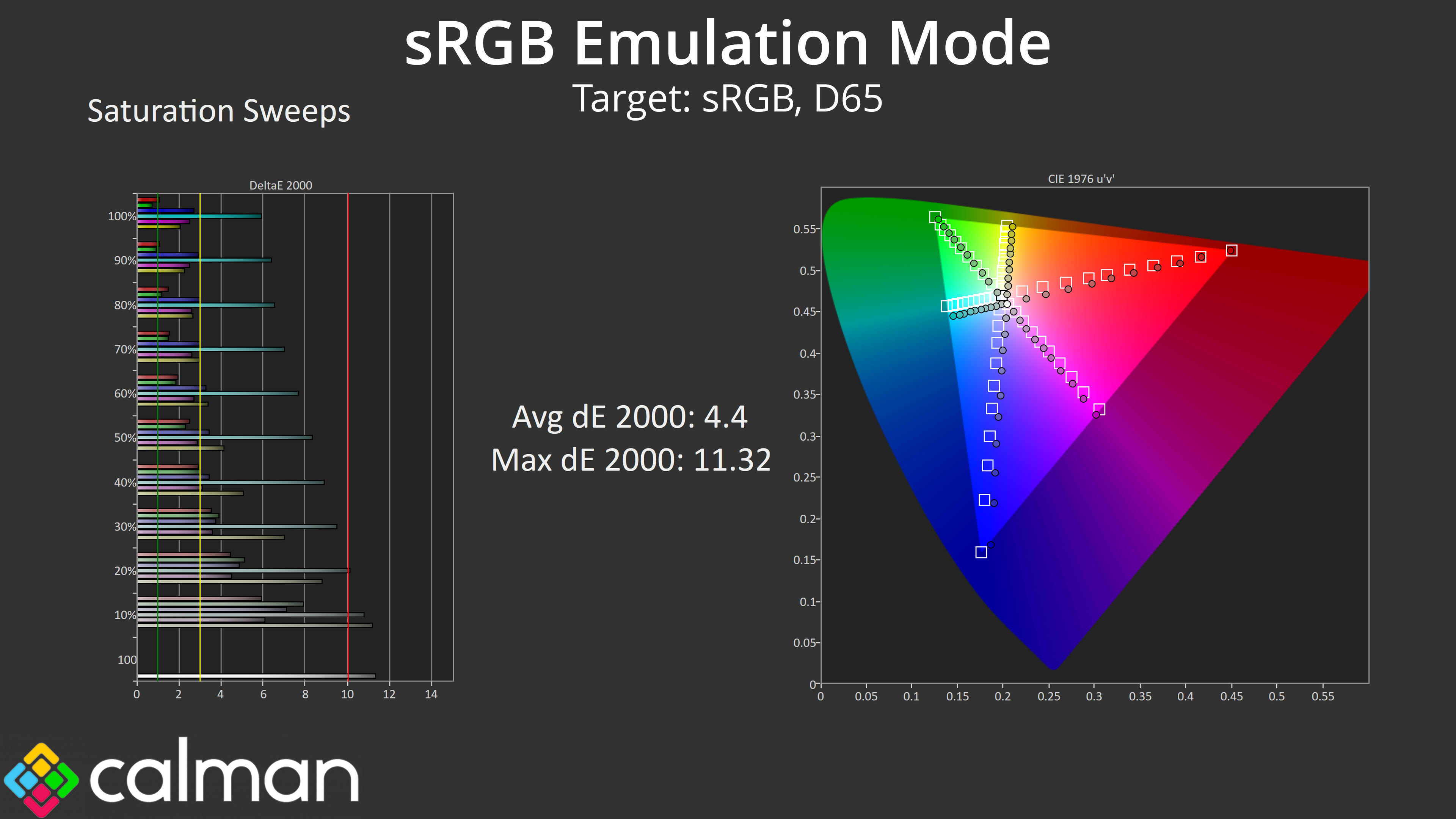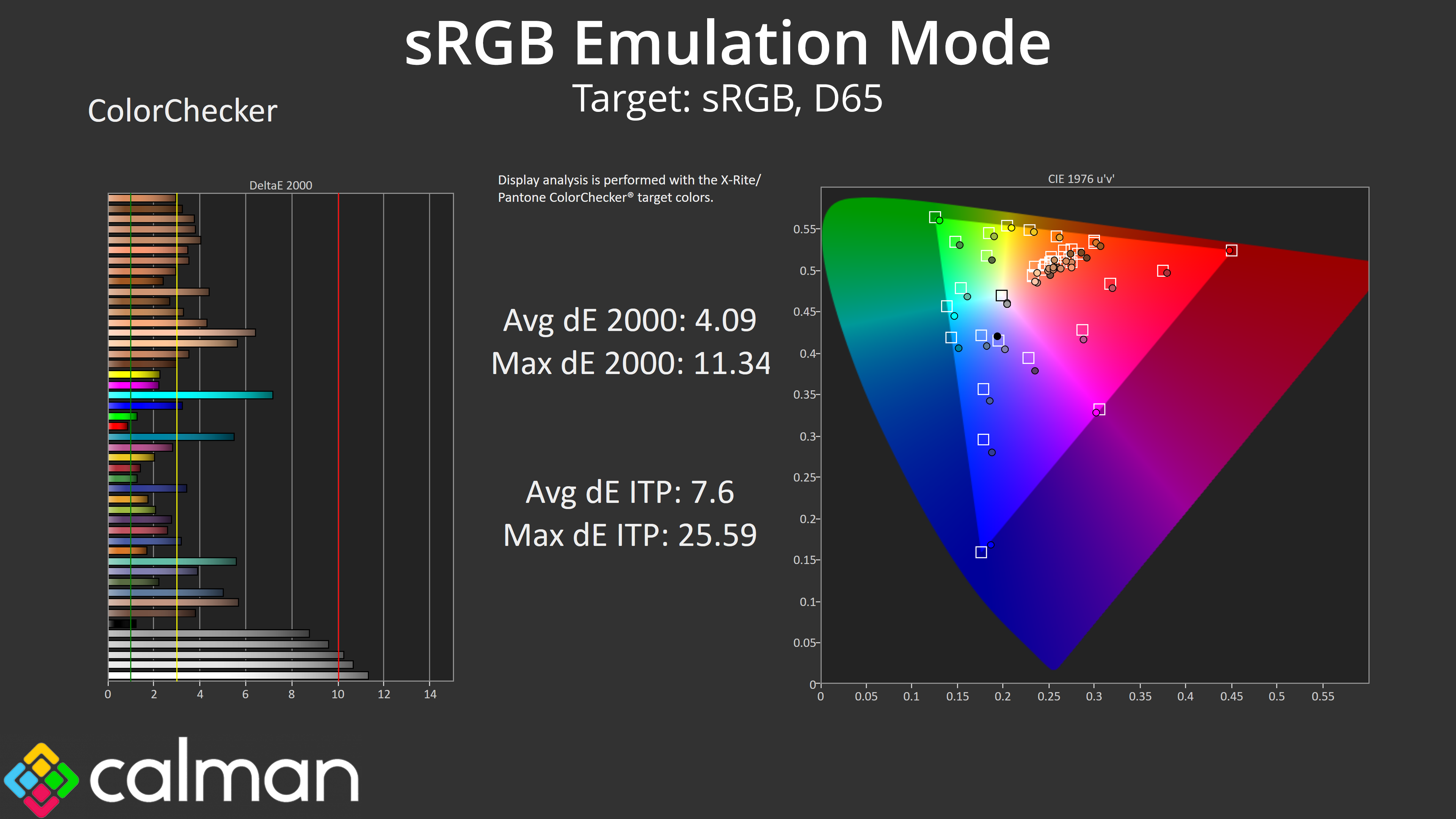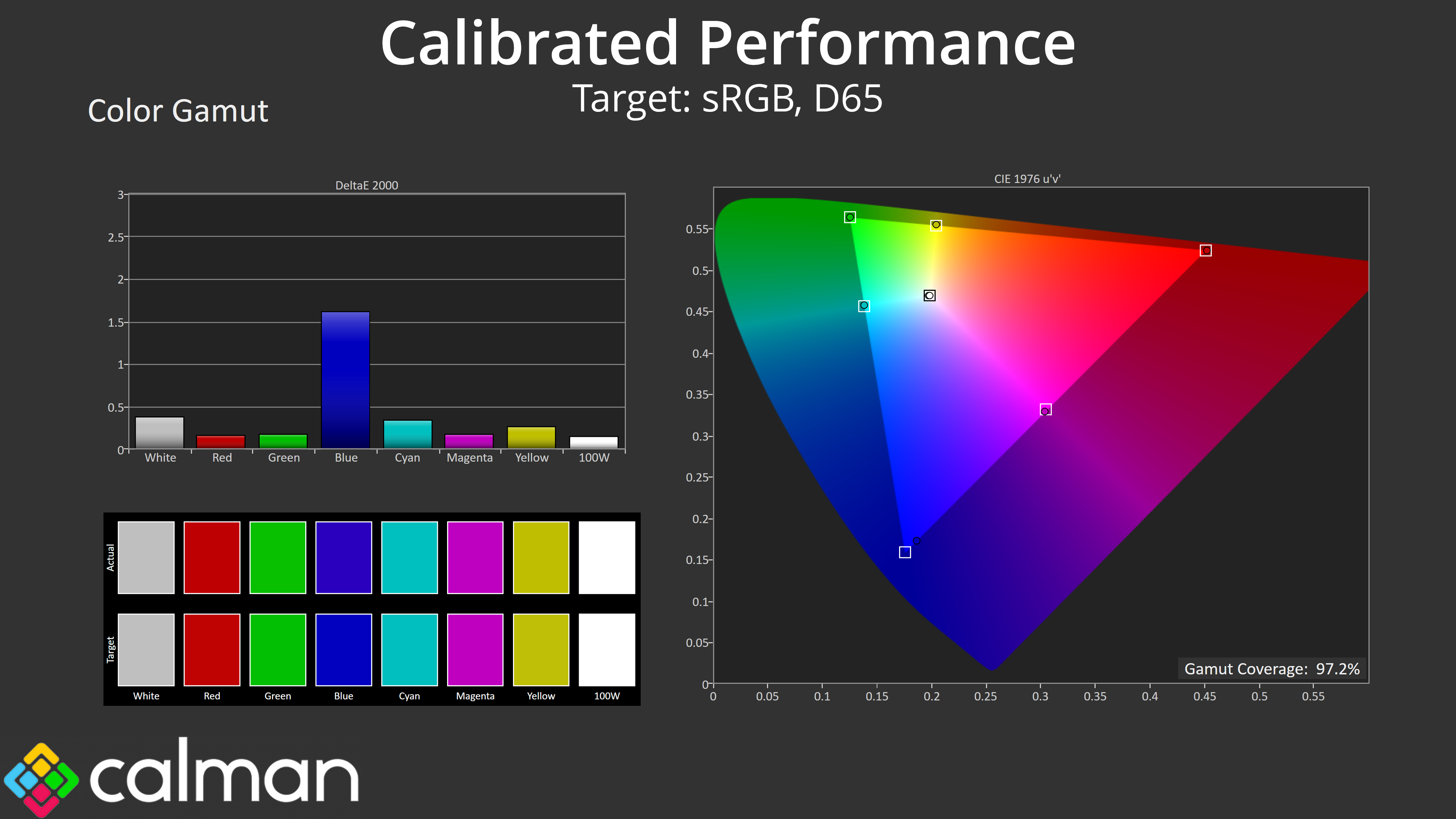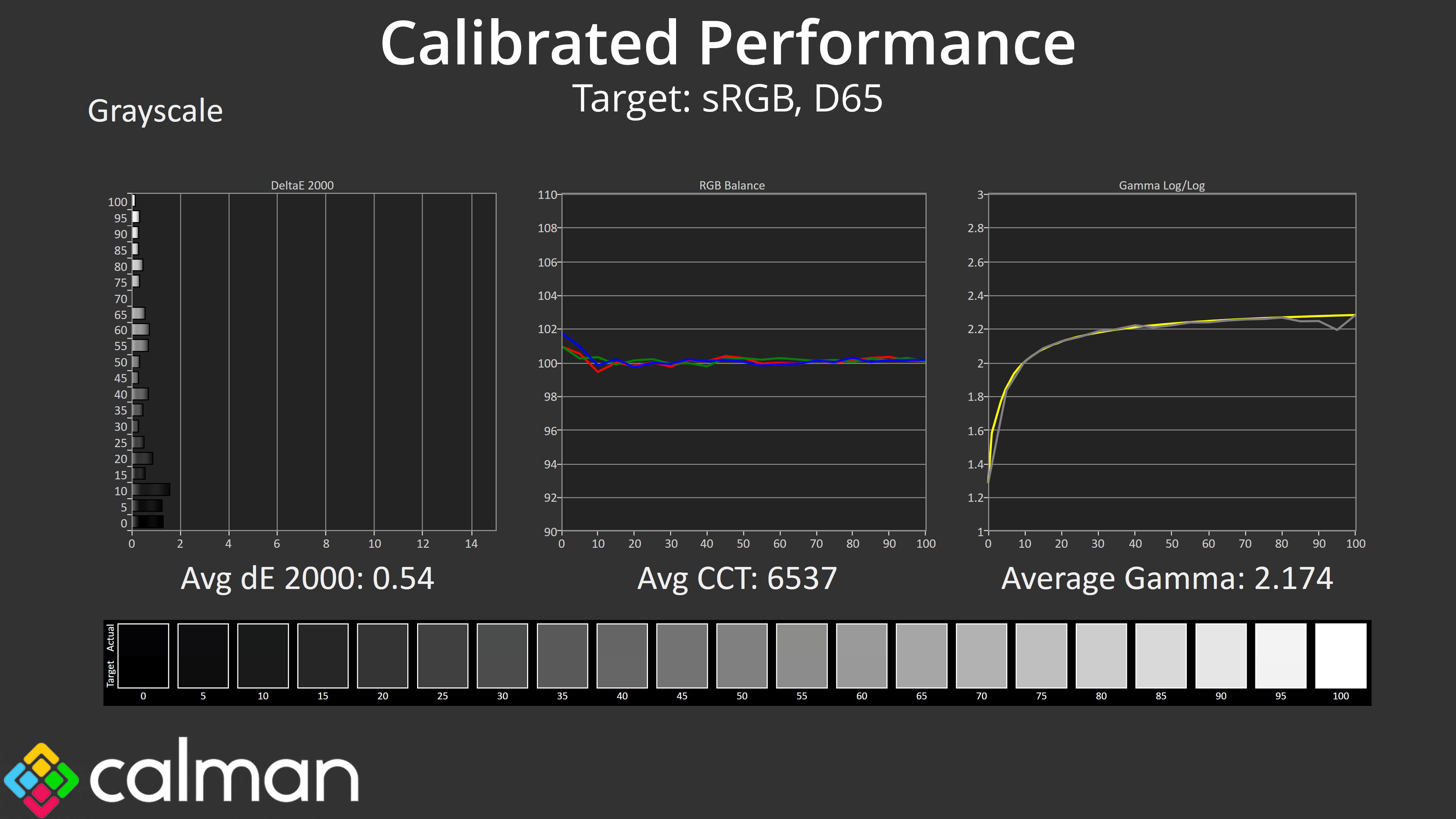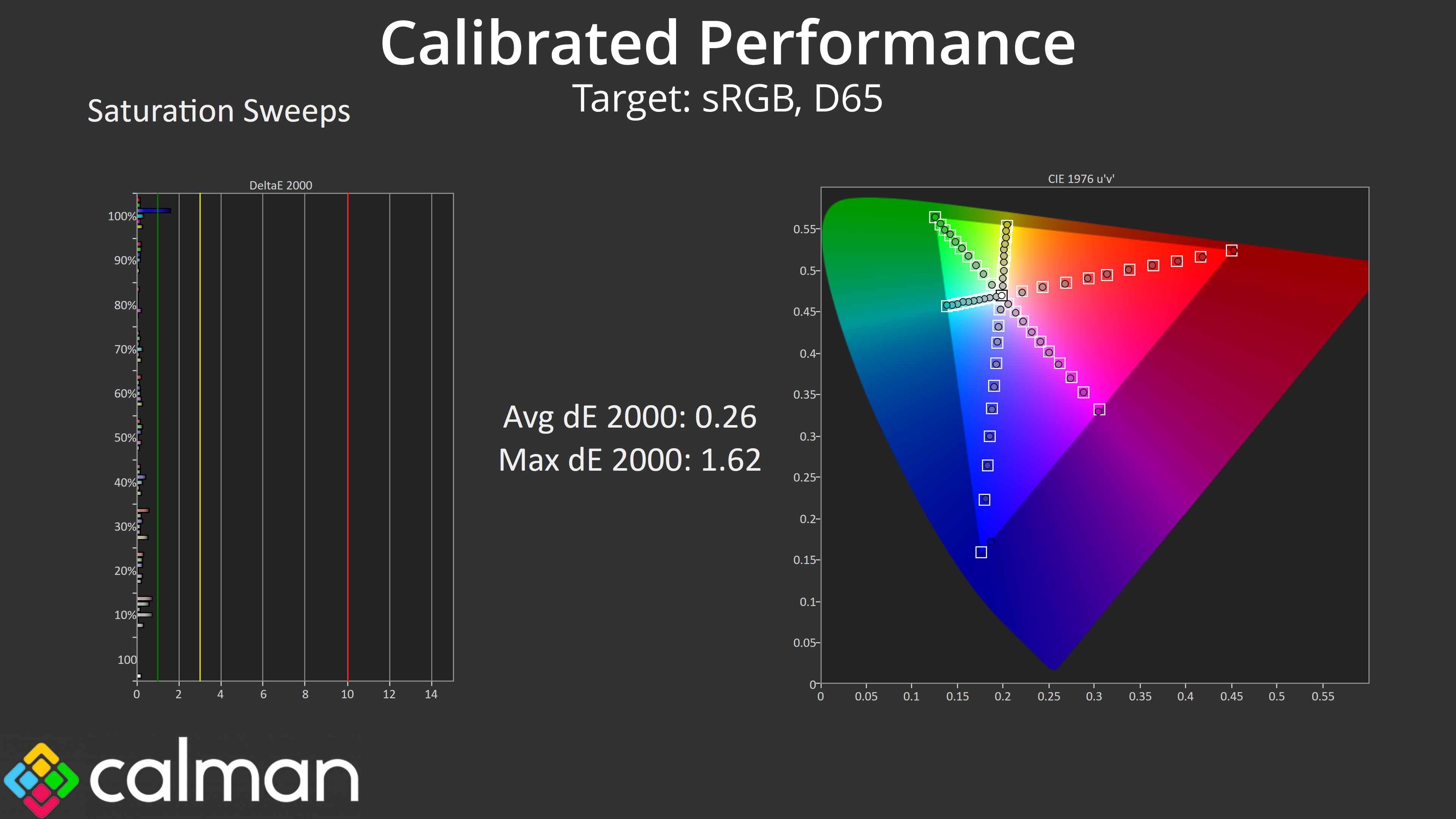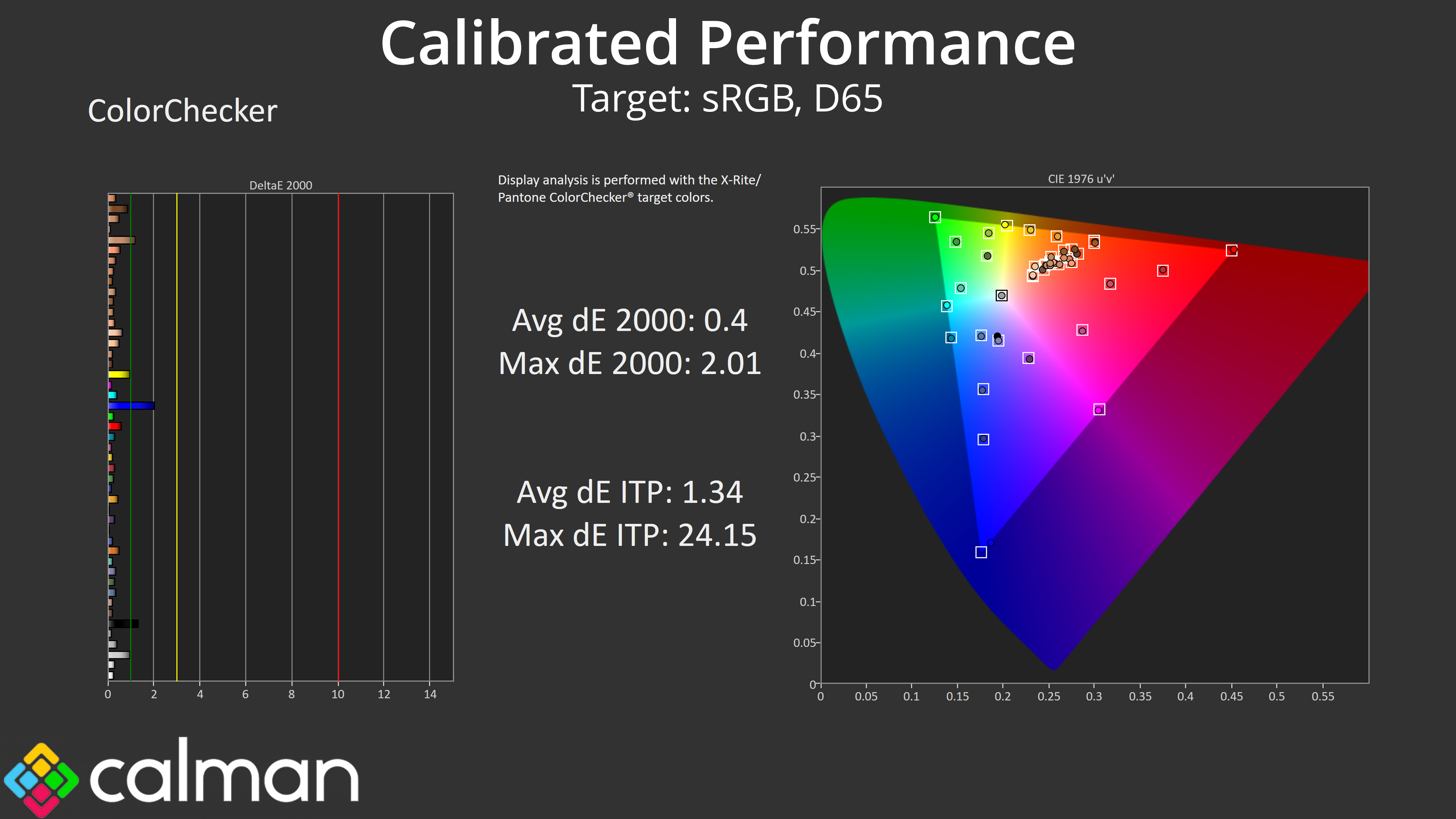Our main test involves using an X-Rite i1 Display Pro Plus colorimeter and utilising Portrait Display's Calman Ultimate software. The device sits on top of the screen while the software generates colour tones and patterns, which it compares against predetermined values to work out how accurate the screen is.
The results show:
- A monitor’s maximum brightness in candelas or cd/m2 at various levels set in the OSD.
- A monitor’s contrast ratio at various brightness levels in the OSD.
- Gamut coverage, primarily focusing on sRGB and DCI-P3 colour spaces.
- Greyscale accuracy, measured across 20 shades, with an average colour balance reported.
- The exact gamma levels, with a comparison against preset settings in the OSD.
- The colour accuracy, expressed as a Delta E ratio, with a result under 3 being fine for normal use, and under 2 being great for colour-accurate design work.
We first run these tests with the display in its out-of-the-box state, with all settings on default. If there is an sRGB emulation option or other useful mode then we may test that too. We then calibrate the screen using the Calman Ultimate software and run the tests again.
You can read more about our test methodology HERE.
Default settings
Brightness and Contrast (Full Screen)
| OSD Brightness | White Luminance (cd/m2) | Black Luminance (cd/m2) | Contrast Ratio |
| 0% | 84.6 | 0.084 | 1014:1 |
| 25% | 129.9 | 0.131 | 992:1 |
| 50% | 175.3 | 0.176 | 995:1 |
| 75% | 294 | 0.297 | 989:1 |
| 100% | 407.1 | 0.412 | 989:1 |
Starting our panel analysis with brightness, the TGM-I27FQ is fairly typical of a mid-range IPS panel, hitting up to 407 nits at maximum. Its minimum of 85 nits is higher than I'd like, but it's passable overall. I was, however, slightly disappointed to see the contrast ratio hovering around the 1000:1 mark – modern IPS panels have been capable of hitting over 1300:1 for a while now, even 1500:1 in the case of the ASRock PG27QFT2A, so this does feel like a bit of a backwards step.
Gamut (CIE 1976)
| Colour space | Coverage (%) |
| sRGB | 98.1 |
| DCI-P3 | 92.3 |
| Adobe RGB | 87.2 |
| Rec.2020 | 74.7 |
Gamut coverage is more as expected from this calibre of screen however, generally exceeding the sRGB space and hitting 92.3% DCI-P3 coverage, 87.2% AdobeRGB and then 74.7% reporting of the Rec.2020 colour space.
Greyscale
As for greyscale, we are starting using completely stock settings, and that includes the Warm colour balance mode. As you can see, greyscale deltaEs are alarmingly high as the colour balance is considerably out of whack. The average CCT (correlated colour temperature) of 6792K doesn't sound too bad, but the red and blue channels are raised significantly relative to the green channel, and that gives the screen a distinct pinkish/purpley hue.
I next tried the Standard colour balance setting, but this was even worse, being significantly cooler to the point we saw an average CCT of 8000K, so this mode is not recommended.
Thankfully, there is user adjustable colour balance and I dialled in the following settings – Red channel: 46, Green channel: 49 and Blue channel: 50. That improved things hugely, with a new average dE 2000 of just 0.97, and a near-perfect average CCT of 6558K. It's good that this option is available, but it's a shame the default presets are so inaccurate, as most users wouldn't have the necessary tools to accurately test any manual adjustments.
I've not mentioned gamma yet either, and things are not quite ideal here either. The TGM-I27FQ features two gamma settings, 1 being the default – it's mostly accurate but does dip slightly towards the mid and upper end of the curve, averaging 2.119. Gamma 2 starts off higher but then drops as the curve goes on, averaging 2.332.
Saturation
Next we come to saturation and we do see a fair amount of over-saturation here relative to the sRGB space, resulting in an average dE 2000 of 4.86.
Colour Accuracy
Colour accuracy is also poor out of the box. No doubt a large part of this is due to the default Warm colour balance setting being so inaccurate, but we see an average dE 2000 of 5.05.
sRGB Emulation Mode
Thermaltake does provide an sRGB emulation, but unfortunately it is not great. It does clamp the gamut down reasonably successfully, but it still uses the Warm colour balance mode and users cannot manually adjust colour balance when using this sRGB mode. As a consequence, we only see minor improvements to saturation and colour accuracy, but it's certainly not a great option to have.
Calibrated Results
We did of course run through a full manual calibration using Calman Ultimate software. This fixed up all of our issues tremendously well, with near-perfect colour balance and gamma tracking. Saturation accuracy also improved to ridiculously good levels, as did our colour accuracy. The panel used here is clearly capable, it's just a shame the factory calibration – in particular the default colour balance presets – are lacklustre.
 KitGuru KitGuru.net – Tech News | Hardware News | Hardware Reviews | IOS | Mobile | Gaming | Graphics Cards
KitGuru KitGuru.net – Tech News | Hardware News | Hardware Reviews | IOS | Mobile | Gaming | Graphics Cards


